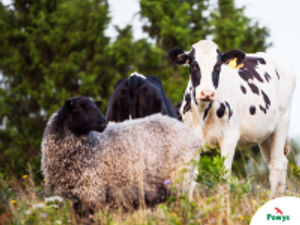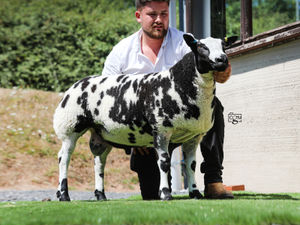Shropshire Farming Talk: Harper Adams University
With results day just around the corner, the word ‘clearing’ is pervasive at this time of the year – the period in which, upon knowing their results, students may choose to change their university of choice.
Clearing is seen very differently now, with students using it for many reasons – while those who perhaps didn’t do as well as they wanted may find other university options, many will use it when they receive better grades than expected to ‘upgrade’ to universities that they may not have considered.
Many are also choosing to apply for the first time to universities through clearing – waiting until they know exactly what they have before making that final decision.
Whatever a student’s reasons for choosing to use clearing, nowadays it’s a perfectly normal and reasonable way to go about the process of securing the best option at university.
Universities understand that and are there to help students navigate the process.
At Harper Adams, during the last few weeks, we’ve opened our doors to many students from across the region and the wider UK to find out more about what Harper has to offer.
We’re changing the world – and to do that, we need curious minds to help us find solutions to the economic and environmental challenges facing our planet, both now and in the future.
We want to equip the next generation of experts in agriculture, engineering, business, food science, animal care, zoology, veterinary science, land management and more, to be able to contribute to the industries of now and the future to develop and maintain sustainable living environments for our planet’s inhabitants.
So as we look towards the Autumn term, we’ve had prospective students join us on a number of campus visits. There are applicant open days in the calendar after resultsday too, to make sure anyone interested in our range of courses and unique teaching style can come and meet us and find out more.
Students are looking for the best value for money options for their degrees - and many will use them as a first step for their career.
Here, our close links with the sectors we serve have been developed to meet the needs of both our graduates and employers – as demonstrated by our Graduate Outcomes figures, which show a staggering 99.2 per cent per cent of our UK-based undergraduates are in work or further study one year and three months after completing their studies.
This may be because most of our students gain a year of industry experience in placements – working with all kinds of companies such as Morrisons, McDonalds CLAAS, Saputo or Savills.
This placement year puts Harper in an enviable position to help students seeking the next step in their futures to make the first move along the journey with confidence.
So, if you’re interested in finding out more about our degrees, it’s not too late to join Harper Adams, your local university. Together, we will make the difference.
Carl Griffiths is Head of Student Recruitment at Harper Adams University.





